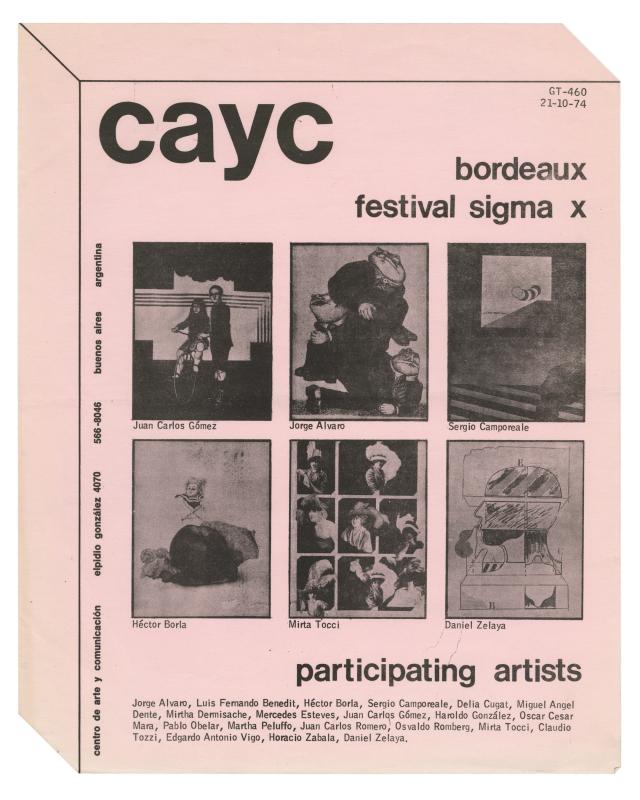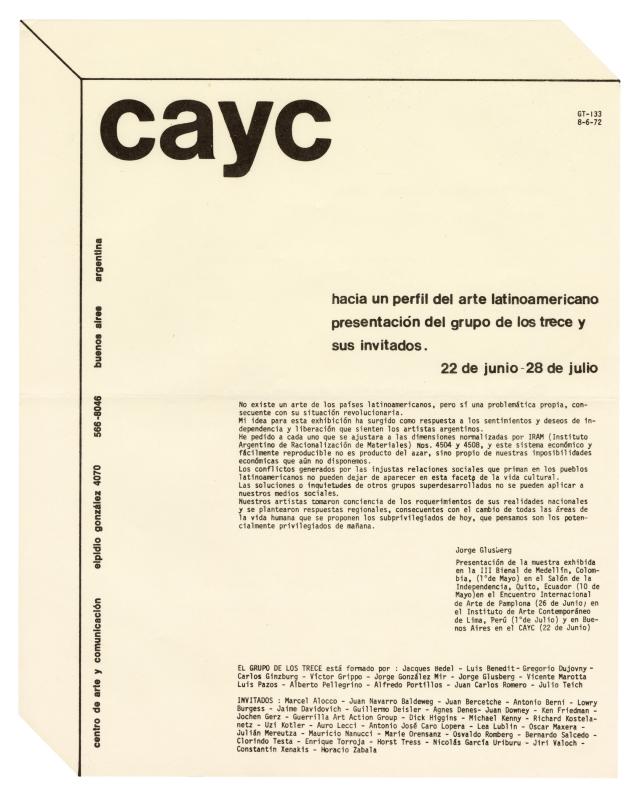Ever since it was founded, the CAYC (Centro de Arte y Comunicación), helmed by the cultural promoter, artist, and businessman Jorge Glusberg, was intended as an interdisciplinary space where an experimental art movement could flourish. The establishment of collaborative networks connecting local and international artists and critics played an important role in this process. The exhibitions shone a light on these exchanges, in which overviews of trends or individual artists provided an introduction to the innovations of international contemporary art and made Argentine and Latin American artists better known on the global scene.
The exhibition Gráficos argentinos ‘74, presented in early 1974 at the Illinois Bell Telephone Company in Chicago, was one of the CAYC’s many attempts to show Argentinean art on the international stage. On this occasion, artists working with different engraving techniques were presented at an event in a North American city with a long tradition in the field of printing. (See GT-357; doc. no. 1476511 and a version shown in Bordeaux, France (GT-460; doc. no. 1476859.)
This newsletter included a review of the Argentinean print exhibition written in English by Harold Haydon (1909–1994), the visual artist, educator, and art critic for the Chicago Sun-Times. Haydon speaks highly of the works in general, noting how the images manage to register social criticism. He names participating artists: Luis (Fernando) Benedit and Jacques Bedel (members of the Grupo de los Trece and early collaborators in the center’s activities). He discusses the works by Mirta Tocci, Sergio Camporeale, Daniel Zelaya, Jorge Álvaro, and Héctor Borla. The exhibition indicates the CAYC’s openness to figurative trends (realism, Neo-Surrealism, and photorealism, among others) that were appearing at that time at major international exhibitions such as the Paris Biennial (1971) and documenta 5 in Kassel (1972). Events of that nature were soon matched in Argentina, as in the Panorama de la pintura argentina joven (1971), organized by the Fundación Lorenzutti at the Museo de Arte Moderno de Buenos Aires, and the Marcelo De Ridder (1973–77) and Benson & Hedges (1977–84) competitions, both of which were presented at the Museo Nacional de Bellas Artes in Buenos Aires.
Haydon explains the CAYC’s standardized approach to publishing the catalogue. The center would send participating artists a formatted sheet with a grid that they could use to submit their works. This method allowed the CAYC to reproduce each artist’s work in various supports and formats: in its newsletters, for example, or in publications that were independent of the CAYC, such as the magazine Héxagono 71, published by Edgardo Antonio Vigo. This strategy contributed to a wider circulation of the images and helped promote the CAYC’s initiatives in other parts of the world. Something similar happened with the re/production of heliographic copies that were featured in several of the center’s publications (GT-133; doc. no. 1476312).



